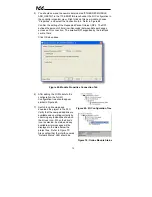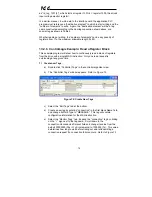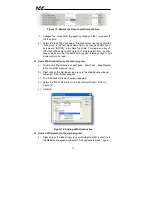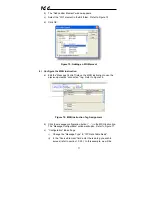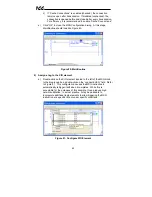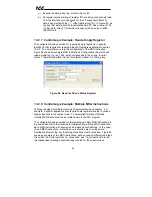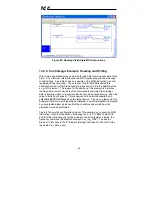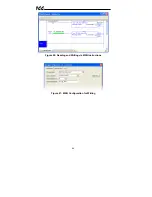
86
ICC
N50 is targeted for writing, the written data is disseminated to the drive’s
registers according to the definition contained in the EtherNet/IP consumed
register configuration array. By appropriate configuration of the EtherNet/IP
consumed and produced register configuration arrays, therefore, bulk access to
non-contiguous but frequently-used drive registers can be conveniently
provided by performing only one read and/or write instruction targeting file N50.
Because both the EtherNet/IP consumed and produced register configuration
arrays are comprised of 32 register definitions, the targeted “offset/element”
must be within the range of 0 to 31 inclusive. Refer to Table 6 for some
examples of N50 accesses.
Table 6: Examples of EtherNet/IP-Style Bulk Access via File N50
Offset/Element
Start Target Register of
Configuration Array
Max Number of
Accessible Elements
0 1st
32
: :
:
15 16th
16
: :
:
31 32nd
1
The application PLC program uses a MSG instruction that is configured with a
“Data Table Address” from which to start the access and a “Size in Elements”
which determines the number of items to access (read or write). The “Data
Table Address” is constructed by selecting a “File/Section Number” and an
“Offset/Element” according to Equation 3. For example, a “File/Section
Number” of N23 and “Offset/Element” of 5 = N23:5, which corresponds to
register 1305 (the drive’s input voltage monitor register).
13.3.2
SLC-5/05 Example: Read a Register Block
This example program will show how to continuously read a block of registers
from the drive with a single MSG instruction. Only one read request is
outstanding at any given time.
1) Run RSLogix 500, and create a new configuration.
2) Create a control and a data file.
a) Right click Data Files and select New… The “Create Data File” dialog
box appears (refer to Figure 88).
b) To create a control file, enter a file number (e.g. 20), set the type to
“Integer”, enter a descriptive name (e.g. “CONTROL”), and enter a
number of elements (e.g. 100). Click OK to create the file. The
control file is used to store configuration information pertaining to the
functionality of the MSG instruction which will perform the data read.

